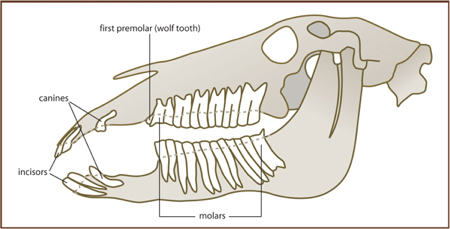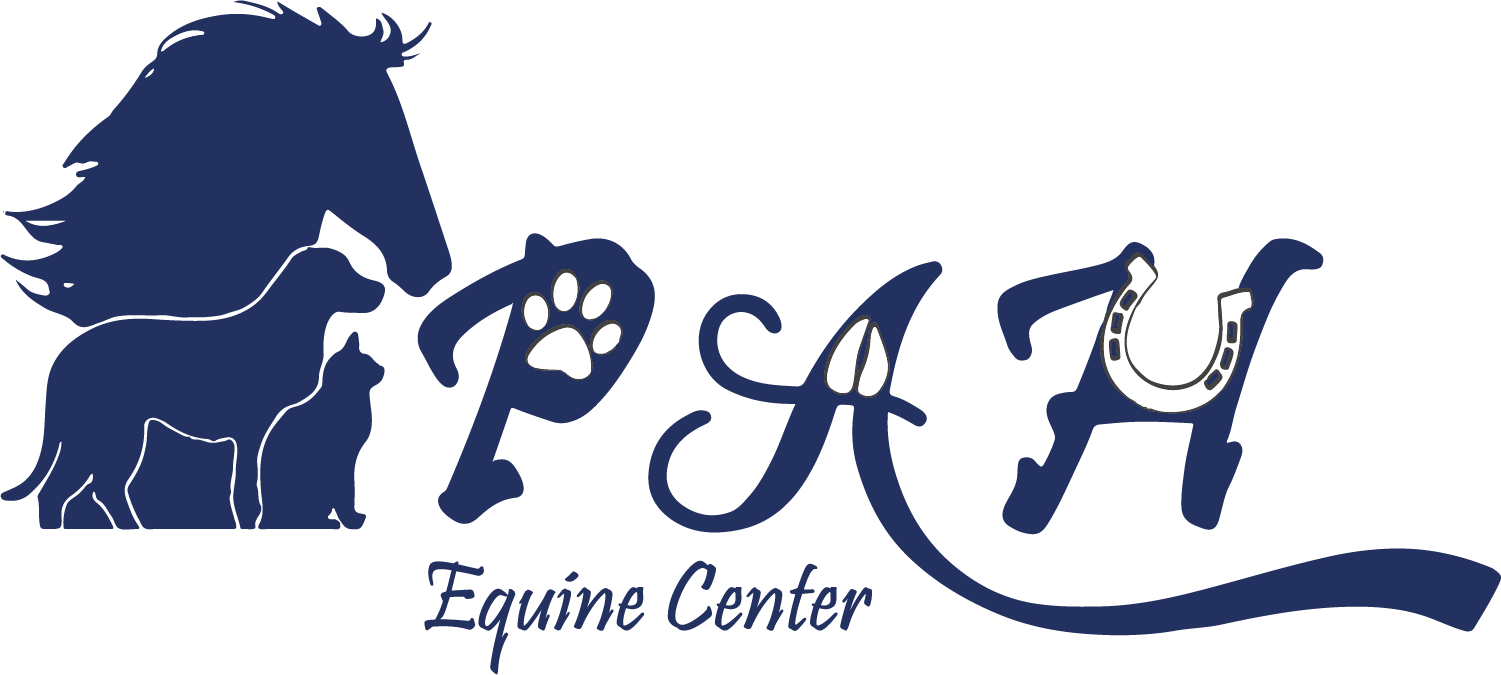The How’s and Why’s of Equine Dental Care
Horses have a unique set of chompers that warrant personalized care to keep them comfortable and healthy at all stages of life. As an animal that evolved to graze, the equine species possesses teeth meant to serve them well on open range, spending the vast majority of their day chewing tough forage. With modern domestication, many horses have been transformed into meal eaters and spend a much shorter amount of their day eating. In addition, grain and hay generally tend to be much softer than wild grasses, and do not wear equine teeth as well. As a result, many of our domesticated horses now require routine care to keep their teeth healthy and to preserve the function of their teeth well into their later years.
Anatomy of a Horse Mouth
The adult equine possesses between 36-44 teeth; 12 incisors, 0-4 canines, 0-4 wolf teeth or first premolars, and 24 cheek teeth, composed of premolars and molars. The bars, or diastema, of the horse’s mouth is the large space between the incisors and the molars, and is where the bit sits. Wolf teeth, if present, are commonly removed at 2 years of age as these are small teeth that can interfere with the bit. Horses start to get their first set of baby teeth, or deciduous teeth, at the time of birth, which are fully erupted by 8 months. At 2.5 years of age, horses will begin replacing their baby teeth starting with the middle incisors. This process continues slowly, and horses have a full set of adult teeth by age 5 when their canines erupt. Equine teeth are extremely long, and the amount of tooth visible in the mouth is only the tip of the iceberg. As a horse ages and their molars become worn down by grinding feed, the teeth will continue to erupt to replace tooth that has worn away.

Common Dental Issues
Equine tooth problems arise for a number of reasons, stemming from abnormal anatomy, injury, and irregular wear. The most common issues include sharp points on the sides of the cheek teeth that can cause ulcers and lacerations to the cheeks and tongue, and long hooks on the front or back cheek teeth. Over time some horses can develop a wave mouth due to an abnormal or uneven bite, which causes the molars to wear in an irregular wave-shaped pattern. Horses with an over or underbite may not wear their incisors properly, and these front teeth may require attention as well. Many of these issues can be corrected if caught early, but if allowed to worsen it may take several treatments over 6-18 months to correct these issues. In addition to wear and tear a horse may experience lost or broken teeth, retained baby caps, and tooth infections which can cause serious issues.
Signs of a Problem
The indicators of dental disease varies depending on the particular issue and how it affects your horse. One of the most classic symptoms is finding wads of feed around the pen from a horse unable to properly chew and swallow his feed. This dropping of feed is commonly known as “quidding.” Some horses may show subtle signs such as having difficulty chewing, losing weight, or passing large feed particles in their manure. Poorly chewed feed can become a colic risk, as large pieces of feed passing through the intestine can increase the chance of impactions. Alternatively, horses may have more dramatic symptoms such as refusing or fighting the bit, head tossing, or rolling their tongue. Severe disease such as tooth infections may cause a foul odor from the mouth or nostrils, bloody or foul nasal discharge, and swelling of the face or jaw.
Benefits of Preventative Dental Care
The benefits of routine dental care are numerous, not only for the immediate comfort and health of your horse, but for preserving their dental integrity for years and decades to come. In particular, emphasis should be placed on pursuing care before severe problems occur. Foals should be examined within the first six months of life to detect any birth defects that may need to be addressed. Adult horses should be evaluated annually to facilitate correction of issues as they arise. If a problem is suspected, your horse can be sedated to provide a more comfortable, anxiety-free experience, and to effectively visualize and access all corners of the mouth and allow accurate diagnosis and treatment of any issues. Hand or power dental tools will be utilized to correct abnormalities. Of course every horse’s teeth are completely different, and as a result their dental needs vary from low maintenance to high. Consult your veterinarian to discuss a dental plan that fits the needs of your horse and your lifestyle.
Prescott Animal Hospital Equine Center
What's Next
Call us or schedule an
appointment online.Meet with a doctor for
an initial exam.Put a plan together for
your pet.

